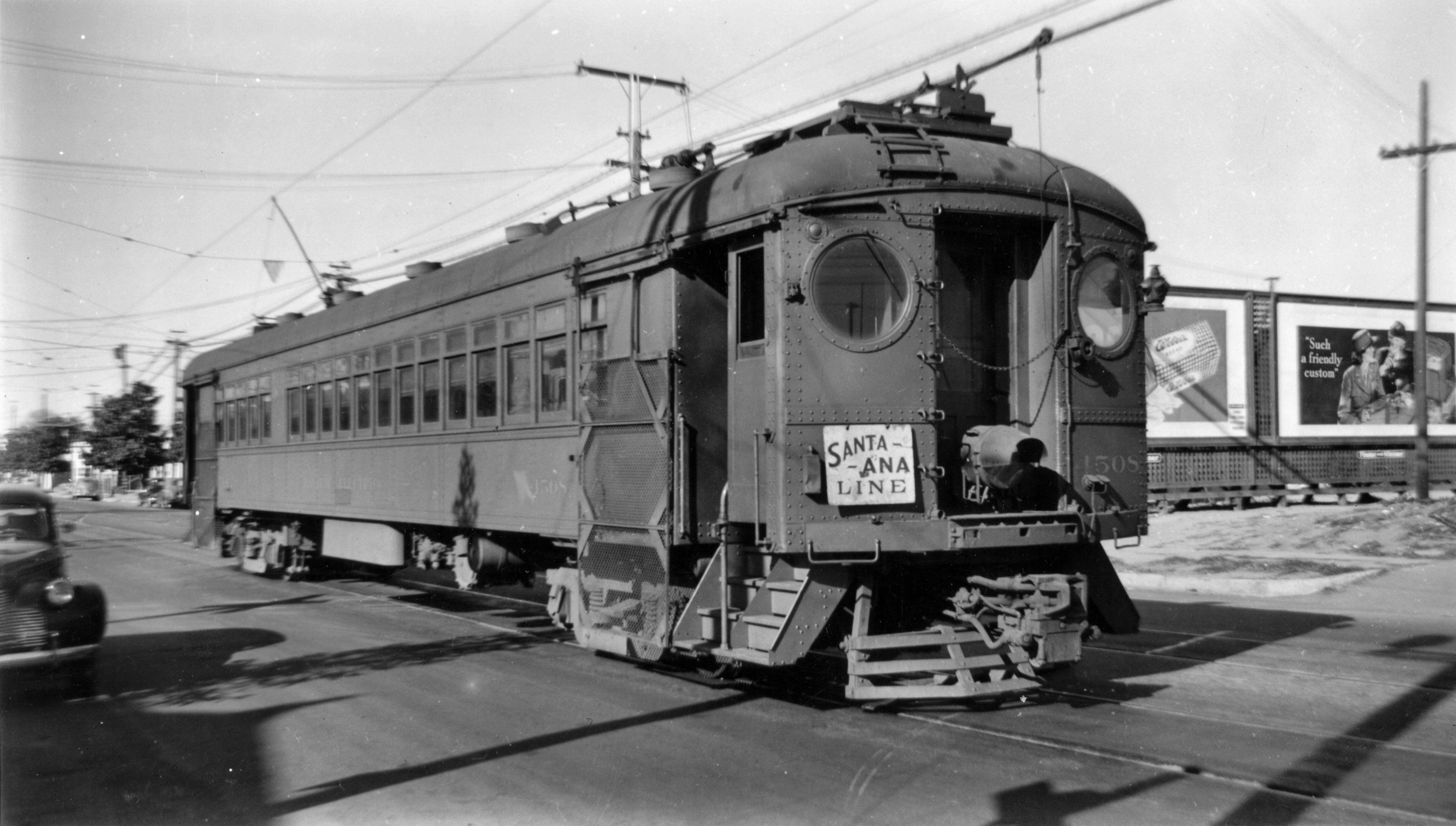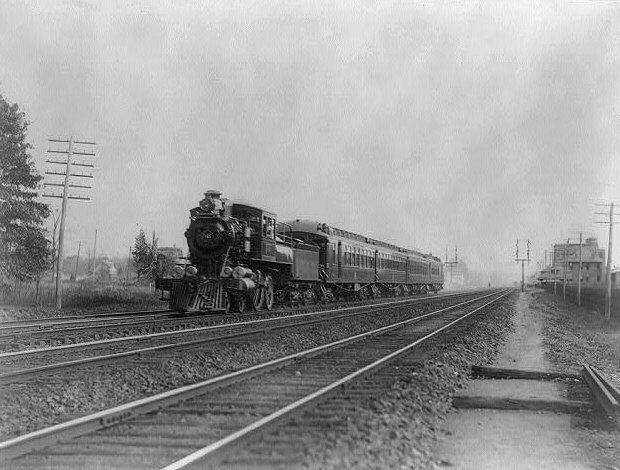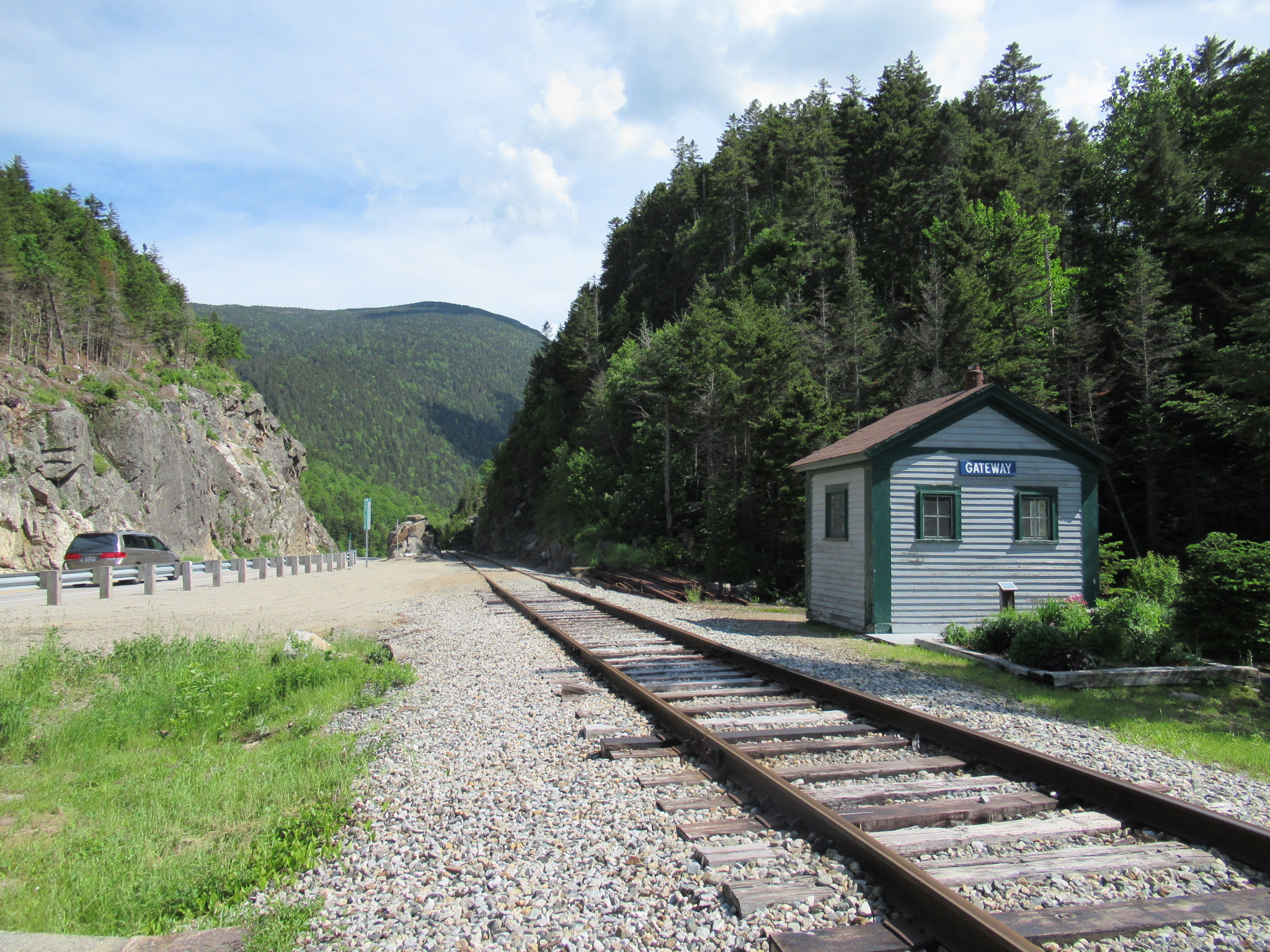|
1958 In Rail Transport
Events January * January ** Unable to keep his promises to shareholders, Robert Ralph Young suspends dividends on New York Central stock, a factor in his subsequent suicide on January 25. ** Last steam locomotive operated by Nederlandse Spoorwegen. * January 1 – The Chicago & North Western Railway acquires the Litchfield and Madison Railway. February * February 4 – Canada's Kellog Commission releases a report on the use of firemen as part of diesel locomotive crews. * February – The Alaska Railroad sells six ex-USATC S160 Class 2-8-0 locomotives to the standard gauge Ferrocarril de Langreo in northern Spain, where they are used on a new diversion built to avoid a cable railway. This will be the third Transatlantic crossing for #3410. March * March 4 – The Los Angeles Metropolitan Transit Authority begins operating the remnant passenger services of the Pacific Electric and Los Angeles Railway. [...More Info...] [...Related Items...] OR: [Wikipedia] [Google] [Baidu] |
Robert Ralph Young
Robert Ralph Young (February 14, 1897 – January 25, 1958) was an American financier and industrialist. He is best known for leading the Chesapeake and Ohio Railway and the New York Central Railroad during and after World War II. He was a brother-in-law of the famous western painter, Georgia O'Keeffe. Because of his initials, R.R. Young was often labeled "Railroad" Young. He was otherwise known as the "Populist of Wall Street," or, as his press agent encouraged journalists to call him, "The Daring Young Man of Wall Street". He regarded himself as a crusader against the mismanagement of railroads by banking interests. Young's most famous advertising slogan was "A hog can cross the country without changing trains - but you can't." Despite his vocal criticisms, at the railroads he led, Young inaugurated many forward-looking advances in technology that have ramifications to the present. He was one of the first railroad executives to introduce high-speed diesel powered passenger ... [...More Info...] [...Related Items...] OR: [Wikipedia] [Google] [Baidu] |
Los Angeles Times
The ''Los Angeles Times'' (abbreviated as ''LA Times'') is a daily newspaper that started publishing in Los Angeles in 1881. Based in the LA-adjacent suburb of El Segundo since 2018, it is the sixth-largest newspaper by circulation in the United States. The publication has won more than 40 Pulitzer Prizes. It is owned by Patrick Soon-Shiong and published by the Times Mirror Company. The newspaper’s coverage emphasizes California and especially Southern California stories. In the 19th century, the paper developed a reputation for civic boosterism and opposition to labor unions, the latter of which led to the bombing of its headquarters in 1910. The paper's profile grew substantially in the 1960s under publisher Otis Chandler, who adopted a more national focus. In recent decades the paper's readership has declined, and it has been beset by a series of ownership changes, staff reductions, and other controversies. In January 2018, the paper's staff voted to unionize and final ... [...More Info...] [...Related Items...] OR: [Wikipedia] [Google] [Baidu] |
West Santa Ana Branch
The West Santa Ana Branch is a rail right-of-way formerly used by the Pacific Electric's (PE) Santa Ana route in Los Angeles County and Orange County in Southern California. The Los Angeles County Metropolitan Transportation Authority (Metro) owns the segment of the right-of-way in Los Angeles County, and the Orange County Transportation Authority (OCTA) owns the segment in Orange County. The line runs from the Watts Towers in the city of Los Angeles, southeast to the intersection of 4th Street and Santa Ana Boulevard in downtown Santa Ana. A portion of it is occupied by Interstate 105 and the C Line. The right-of-way runs nearly straight on a diagonal between the two cities, in contrast to the cardinal grid of Orange County. History The right-of-way was established as an interurban route for the Pacific Electric Railway. Grading of the route began on September 30, 1904, and service commenced in 1905. The line was double-tracked for its length except for single track bri ... [...More Info...] [...Related Items...] OR: [Wikipedia] [Google] [Baidu] |
Santa Ana Line
The Santa Ana Line was an interurban railway route connecting Los Angeles and Santa Ana in Orange County. It ran between 1905 and 1958 (with the southern end truncated to Bellflower in 1950) and was predominantly operated by the Pacific Electric Railway for its history. History The route began operation on November 6, 1905 under the Los Angeles Inter-Urban Electric Railway; Pacific Electric leased the line starting in 1908 and fully acquired it in 1911 under terms of the Great Merger. The Santa Ana Line was designated as route number 11 during most of its operational life. Santa Ana's status as the county seat and largest city in Orange County at the time allowed for high ridership. The railway built a new station in the city in late 1927, and cars were rerouted to serve it. Cars ceased running to the Santa Ana Southern Pacific Depot in November 1945. By 1950, service had halved from its peak only five years earlier and the line was cut back to a minor station in Bellflo ... [...More Info...] [...Related Items...] OR: [Wikipedia] [Google] [Baidu] |
Royal Blue (train)
The ''Royal Blue'' was the Baltimore and Ohio Railroad, Baltimore and Ohio Railroad (B&O)'s flagship passenger train between New York City and Washington, D.C., in the United States, beginning in 1890. The Baltimore-based B&O also used the name between 1890 and 1917 for its improved passenger service between New York and Washington, collectively dubbed the ''Royal Blue Line''. Using variants such as the ''Royal Limited'' and ''Royal Special'' for individual ''Royal Blue'' trains, the B&O operated the service in partnership with the Reading Company, Reading Railroad and the Central Railroad of New Jersey. Principal intermediate cities served were Philadelphia, Wilmington, Delaware, Wilmington, and Baltimore. Later, as Europe reeled from the carnage of World War I and connotations of European royalty fell into disfavor, the B&O discreetly omitted the sobriquet ''Royal Blue Line'' from its New York passenger service and the ''Royal Blue'' disappeared from B&O timetables. Beginnin ... [...More Info...] [...Related Items...] OR: [Wikipedia] [Google] [Baidu] |
Baltimore And Ohio Railroad
The Baltimore and Ohio Railroad was the first common carrier railroad and the oldest railroad in the United States, with its first section opening in 1830. Merchants from Baltimore, which had benefited to some extent from the construction of the National Road early in the century, wanted to do business with settlers crossing the Appalachian Mountains. The railroad faced competition from several existing and proposed enterprises, including the Albany-Schenectady Turnpike, built in 1797, the Erie Canal, which opened in 1825, and the Chesapeake and Ohio Canal. At first, the B&O was located entirely in the state of Maryland; its original line extending from the port of Baltimore west to Sandy Hook, Maryland, opened in 1834. There it connected with Harper's Ferry, first by boat, then by the Wager Bridge, across the Potomac River into Virginia, and also with the navigable Shenandoah River. Because of competition with the C&O Canal for trade with coal fields in western Maryland, t ... [...More Info...] [...Related Items...] OR: [Wikipedia] [Google] [Baidu] |
Mountain Division
The Mountain Division (later the Mountain Subdivision) is a railroad line that was once owned and operated by the Maine Central Railroad (MEC). It stretches from Portland, Maine on the Atlantic Ocean, through the Western Maine Mountains and White Mountains of New Hampshire, ending at St. Johnsbury, Vermont in the Northeast Kingdom. The line was abandoned in 1983 by MEC's successor, Guilford Transportation Industries (GTI). Guilford retained a stub between Portland and Westbrook. A section in New Hampshire remains in use by heritage railway Conway Scenic Railroad. History Built as the Portland & Ogdensburg Railroad before acquisition by the Maine Central Railroad (MEC), the line initially provided transportation for summer visitors to grand Victorian hotels, including the Bay of Naples Inn in Naples (reached by connection with Sebago Lake steamboats), the Crawford House in Crawford Notch and the Mount Washington Hotel in Bretton Woods. Cool, clean air at Sebago Lake and the W ... [...More Info...] [...Related Items...] OR: [Wikipedia] [Google] [Baidu] |
Maine Central Railroad
The Maine Central Railroad Company was a U. S. Class I railroad in central and southern Maine. It was chartered in 1856 and began operations in 1862. By 1884, Maine Central was the longest railroad in New England. Maine Central had expanded to when the United States Railroad Administration assumed control in 1917. The main line extended from South Portland, Maine, east to the Canada–United States border with New Brunswick, and a Mountain Division extended west from Portland to St. Johnsbury, Vermont and north into Quebec. The main line was double track from South Portland to Royal Junction, where it split into a "lower road" through Brunswick and Augusta and a "back road" through Lewiston, which converged at Waterville into single track to Bangor and points east. Branch lines served the industrial center of Rumford, a resort hotel on Moosehead Lake and coastal communities from Bath to Eastport. At the end of 1970, it operated of road on of track; that year it reported ... [...More Info...] [...Related Items...] OR: [Wikipedia] [Google] [Baidu] |
El Cerrito, California
El Cerrito (Spanish for "The Little Hill") is a city in Contra Costa County, California, United States, and forms part of the San Francisco Bay Area. It has a population of 25,962 according to the 2020 census. El Cerrito was founded by refugees from the 1906 San Francisco earthquake. It was incorporated in 1917 as a village with 1,500 residents. As of the census in 2000, there were 23,171 people, 10,208 households and 5,971 families in the city. History El Cerrito was founded by refugees from the 1906 San Francisco earthquake. They settled in what was then Don Víctor Castro's Rancho San Pablo, and adjacent to the ranch owned by the family of Luís María Peralta, the Rancho San Antonio.Contra Costa/Alameda County Line , Mervin Belfils/El Cerrito Historical Society, October 1975/June 2006, retrieved 2007-08 ... [...More Info...] [...Related Items...] OR: [Wikipedia] [Google] [Baidu] |
Key System
The Key System (or Key Route) was a privately owned company that provided mass transit in the cities of Oakland, Berkeley, Alameda, Emeryville, Piedmont, San Leandro, Richmond, Albany, and El Cerrito in the eastern San Francisco Bay Area from 1903 until 1960, when it was sold to a newly formed public agency, AC Transit. The Key System consisted of local streetcar and bus lines in the East Bay, and commuter rail and bus lines connecting the East Bay to San Francisco by a ferry pier on San Francisco Bay, later via the lower deck of the Bay Bridge. At its height during the 1940s, the Key System had over of track. The local streetcars were discontinued in 1948 and the commuter trains to San Francisco were discontinued in 1958. The Key System's territory is today served by BART and AC Transit bus service. History Early years The system was a consolidation of several streetcar lines assembled in the late 1890s and early 1900s by Francis Marion "Borax" Smith. After having ... [...More Info...] [...Related Items...] OR: [Wikipedia] [Google] [Baidu] |
Steam Locomotive
A steam locomotive is a locomotive that provides the force to move itself and other vehicles by means of the expansion of steam. It is fuelled by burning combustible material (usually coal, oil or, rarely, wood) to heat water in the locomotive's boiler to the point where it becomes gaseous and its volume increases 1,700 times. Functionally, it is a steam engine on wheels. In most locomotives, the steam is admitted alternately to each end of its cylinders, in which pistons are mechanically connected to the locomotive's main wheels. Fuel and water supplies are usually carried with the locomotive, either on the locomotive itself or in a tender coupled to it. Variations in this general design include electrically-powered boilers, turbines in place of pistons, and using steam generated externally. Steam locomotives were first developed in the United Kingdom during the early 19th century and used for railway transport until the middle of the 20th century. Richard Trevithick ... [...More Info...] [...Related Items...] OR: [Wikipedia] [Google] [Baidu] |
Maryborough, Queensland
Maryborough ( ) is a city and a suburb in the Fraser Coast Region, Queensland, Australia. At the 2021 Census, Maryborough had a population of 15,287. Geography Maryborough is located on the Mary River in Queensland, Australia, approximately north of the state capital, Brisbane. The city is served by the Bruce Highway. It is closely tied to its neighbour city Hervey Bay which is approximately northeast. Together they form part of the area known as the Fraser Coast. The neighbourhood of Baddow is within the west of the suburb near the Mary River. It takes its name from Baddow House, a historic property in the area (). Baddow railway station () and Baddow Island () in the Mary River also take their names from the house. History Original inhabitants, language and culture Evidence of human inhabitation of the Maryborough region stretches back to at least 6,000 years ago. The Gubbi Gubbi (Kabi Kabi) and Batjala (Butchulla) people were the original inhabitants of the r ... [...More Info...] [...Related Items...] OR: [Wikipedia] [Google] [Baidu] |





_train.jpg)


.jpg)
.jpg)

.jpg)